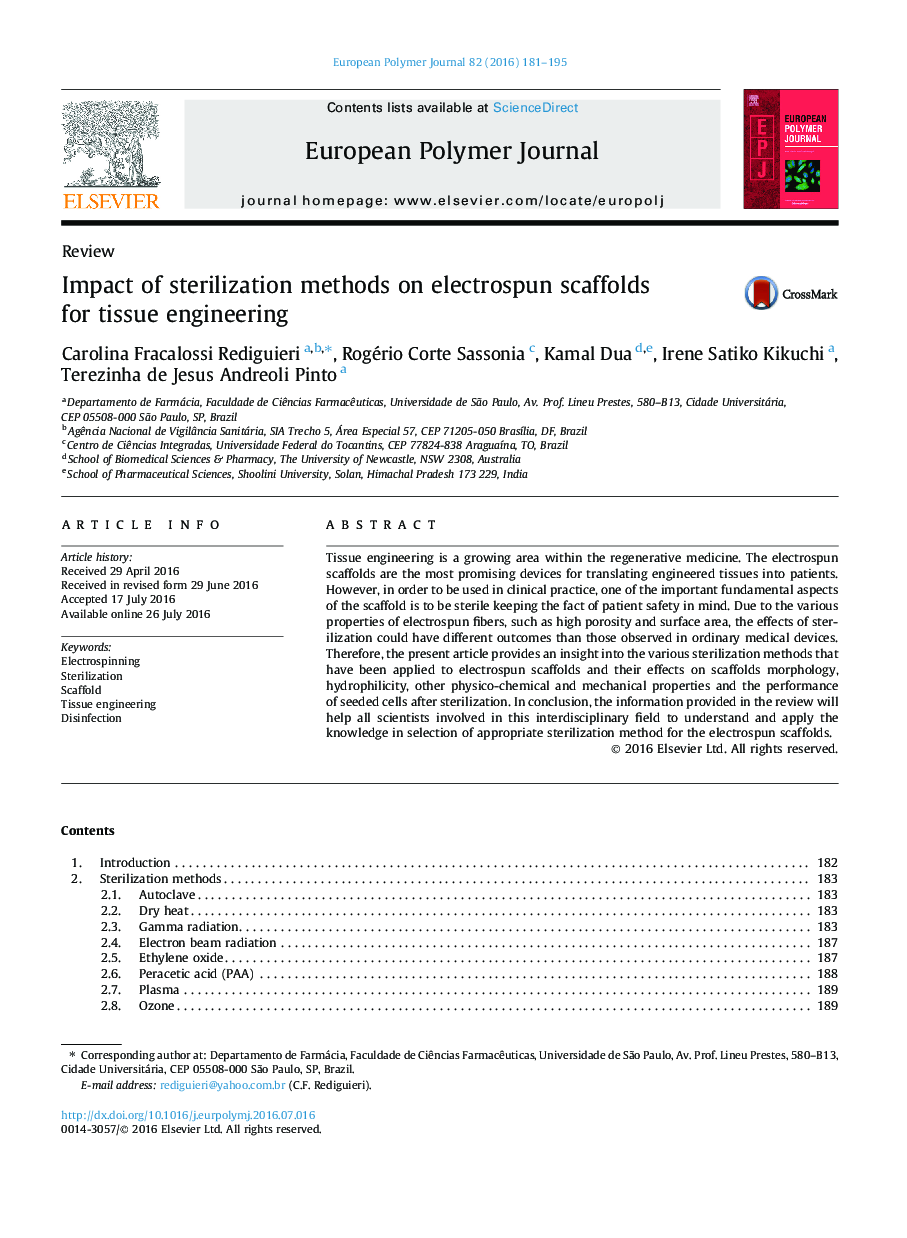| Article ID | Journal | Published Year | Pages | File Type |
|---|---|---|---|---|
| 1399142 | European Polymer Journal | 2016 | 15 Pages |
Tissue engineering is a growing area within the regenerative medicine. The electrospun scaffolds are the most promising devices for translating engineered tissues into patients. However, in order to be used in clinical practice, one of the important fundamental aspects of the scaffold is to be sterile keeping the fact of patient safety in mind. Due to the various properties of electrospun fibers, such as high porosity and surface area, the effects of sterilization could have different outcomes than those observed in ordinary medical devices. Therefore, the present article provides an insight into the various sterilization methods that have been applied to electrospun scaffolds and their effects on scaffolds morphology, hydrophilicity, other physico-chemical and mechanical properties and the performance of seeded cells after sterilization. In conclusion, the information provided in the review will help all scientists involved in this interdisciplinary field to understand and apply the knowledge in selection of appropriate sterilization method for the electrospun scaffolds.
Graphical abstractFigure optionsDownload full-size imageDownload as PowerPoint slide
